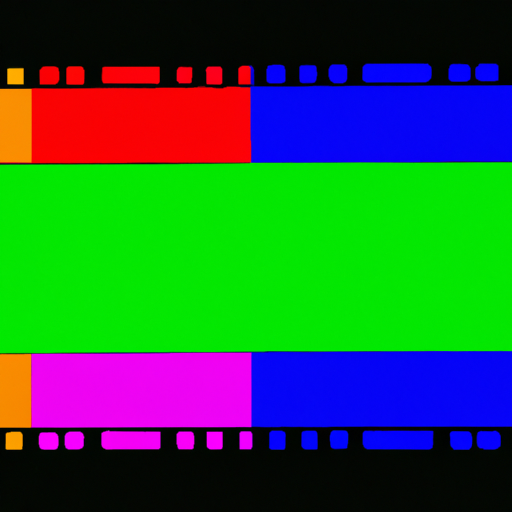
-
Table of Contents
Symbolism in Visual Communication: Artistic Approach

Visual communication is a powerful tool that transcends language barriers and connects people on a deeper level. Through the use of symbols, artists and designers can convey complex ideas and emotions in a concise and impactful way. Symbolism in visual communication allows for a deeper understanding and interpretation of the message being conveyed. In this article, we will explore the significance of symbolism in visual communication and how it can be effectively used to create compelling and thought-provoking artwork.
The Power of Symbols
Symbols have been used throughout history to represent ideas, concepts, and emotions. They have the ability to evoke strong emotions and create a lasting impression on the viewer. Symbols can be found in various forms of visual communication, including paintings, illustrations, logos, and advertisements.
One of the reasons symbols are so powerful is their ability to transcend language. Unlike words, which are specific to a particular language, symbols have a universal meaning that can be understood by people from different cultures and backgrounds. This makes them an effective tool for communication in a globalized world.
Furthermore, symbols have the ability to convey complex ideas and emotions in a concise and impactful way. They can condense a wealth of information into a single image, allowing the viewer to quickly grasp the intended message. This is particularly important in today’s fast-paced society, where attention spans are shorter than ever.
The Role of Symbolism in Art
Artists have long used symbolism as a means of expressing their ideas and emotions. Symbolism in art can be seen in various forms, including the use of specific colors, objects, and motifs. By incorporating symbols into their artwork, artists can add layers of meaning and create a deeper connection with the viewer.
One famous example of symbolism in art is Vincent van Gogh’s painting “Starry Night.” In this painting, van Gogh uses swirling brushstrokes and vibrant colors to depict a night sky filled with stars. The stars in the painting are not just a representation of the night sky; they also symbolize the artist’s inner turmoil and his longing for a sense of peace and tranquility.
Another example is the use of the lotus flower in Buddhist art. The lotus flower is often depicted as emerging from muddy waters, symbolizing the journey from darkness to enlightenment. This symbol is used to convey the idea that one can overcome adversity and achieve spiritual growth.
Symbolism in Design
In addition to art, symbolism plays a crucial role in design. Designers use symbols to create logos, icons, and other visual elements that represent a brand or a product. These symbols are carefully crafted to convey the essence of the brand and create a memorable and recognizable image.
One example of effective symbolism in design is the Nike logo. The Nike swoosh, a simple and abstract symbol, represents movement and speed. It has become synonymous with the brand and instantly recognizable worldwide. The simplicity of the symbol allows it to be easily reproduced and scaled, making it versatile for various applications.
Another example is the recycling symbol, which is used to indicate that a product or packaging is recyclable. The symbol, consisting of three arrows forming a triangle, is universally recognized and understood. It effectively communicates the message of sustainability and encourages people to recycle.
Case Studies: Symbolism in Advertising
Advertising is another area where symbolism is frequently used to create impactful and memorable campaigns. Let’s explore two case studies that demonstrate the power of symbolism in advertising.
Case Study 1: Apple’s “Think Different” Campaign
In the late 1990s, Apple launched its iconic “Think Different” campaign. The campaign featured black-and-white portraits of influential figures such as Albert Einstein, Mahatma Gandhi, and Martin Luther King Jr. The use of these historical figures as symbols of creativity, innovation, and change effectively conveyed Apple’s brand values.
The campaign was a departure from traditional technology advertising, which often focused on product features and specifications. Instead, Apple used symbolism to create an emotional connection with its audience and position itself as a brand that celebrates individuality and non-conformity.
Case Study 2: Coca-Cola’s “Share a Coke” Campaign
In 2011, Coca-Cola launched its “Share a Coke” campaign, which featured personalized bottles and cans with people’s names on them. The campaign aimed to create a sense of personal connection and encourage people to share a Coke with their loved ones.
The use of personal names as symbols of individuality and relationships resonated with consumers and sparked a social media frenzy. People started sharing photos of themselves with their personalized Coke bottles, further amplifying the campaign’s reach and impact.
Using Symbolism Effectively
When using symbolism in visual communication, it is important to consider the following factors to ensure its effectiveness:
- Context: Symbols should be used in a way that is relevant to the message being conveyed. They should enhance the overall meaning and not distract or confuse the viewer.
- Simplicity: Symbols should be simple and easily recognizable. Complex symbols may be difficult to understand and may not have the desired impact.
- Consistency: Symbols should be consistent with the overall brand or message. They should align with the values and personality of the brand or artwork.
- Emotional Appeal: Symbols should evoke emotions and create a connection with the viewer. They should resonate with the target audience and elicit a desired response.
Conclusion
Symbolism in visual communication is a powerful tool that allows artists and designers to convey complex ideas and emotions in a concise and impactful way. Symbols have the ability to transcend language barriers and create a lasting impression on the viewer. Whether used in art, design, or advertising, symbolism adds depth and meaning to visual communication. By understanding the power of symbols and using them effectively, artists and designers can create compelling and thought-provoking artwork that resonates with their audience.
